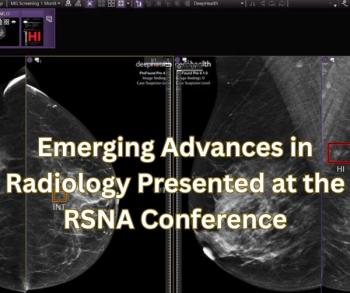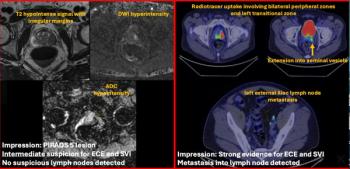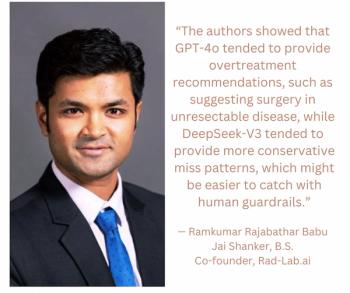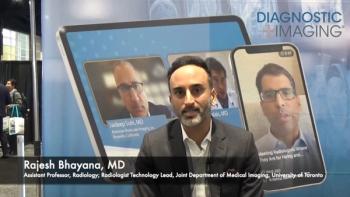
Deep Learning–Based Automatic Detection Algorithm Outperforms Physicians
Algorithm also enhanced physicians’ performances when used as a second reader.
A deep learning–based automatic detection (DLAD) algorithm outperformed physicians in radiograph classification and nodule detection performance for malignant pulmonary nodules on chest radiographs, according to a study published online in the journal
Researchers from Korea performed a retrospective study to develop and validate a DLAD for malignant pulmonary nodules on chest radiographs and to compare its performance with physicians, including thoracic radiologists.
The DLAD was developed by using 43,292 chest radiographs (normal radiograph–to–nodule radiograph ratio, 34,067:9225) in 34,676 patients (healthy-to-nodule ratio, 30,784:3892). There were 19,230 men (mean age, 52.8 years; age range, 18–99 years) and 15,446 women (mean age, 52.3 years; age range, 18–98 years). The radiographs were obtained between 2010 and 2015, and were labeled and partially annotated by 13 board-certified radiologists, in a convolutional neural network.
Radiograph classification and nodule detection performances of DLAD were validated by using one internal and four external data sets from three South Korean hospitals and one U.S. hospital. For internal and external validation, radiograph classification and nodule detection performances of DLAD were evaluated by using the area under the receiver operating characteristic curve (AUROC) and jackknife alternative free-response receiver-operating characteristic (JAFROC) figure of merit (FOM), respectively. An observer performance test involving 18 physicians, including nine board-certified radiologists, was conducted by using one of the four external validation data sets. Performances of DLAD, physicians, and physicians assisted with DLAD were evaluated and compared.
The results showed that according to one internal and four external validation data sets, radiograph classification and nodule detection performances of DLAD were a range of 0.92–0.99 (AUROC) and 0.831–0.924 (JAFROC FOM), respectively. DLAD showed a higher AUROC and JAFROC FOM at the observer performance test than 17 of 18 and 15 of 18 physicians, respectively. All physicians showed improved nodule detection performances with DLAD (mean JAFROC FOM improvement, 0.043; range, 0.006–0.190).
The researchers concluded that this deep learning–based automatic detection algorithm outperformed physicians in radiograph classification and nodule detection performance for malignant pulmonary nodules on chest radiographs, and it enhanced physicians’ performances when used as a second reader.
Newsletter
Stay at the forefront of radiology with the Diagnostic Imaging newsletter, delivering the latest news, clinical insights, and imaging advancements for today’s radiologists.




























